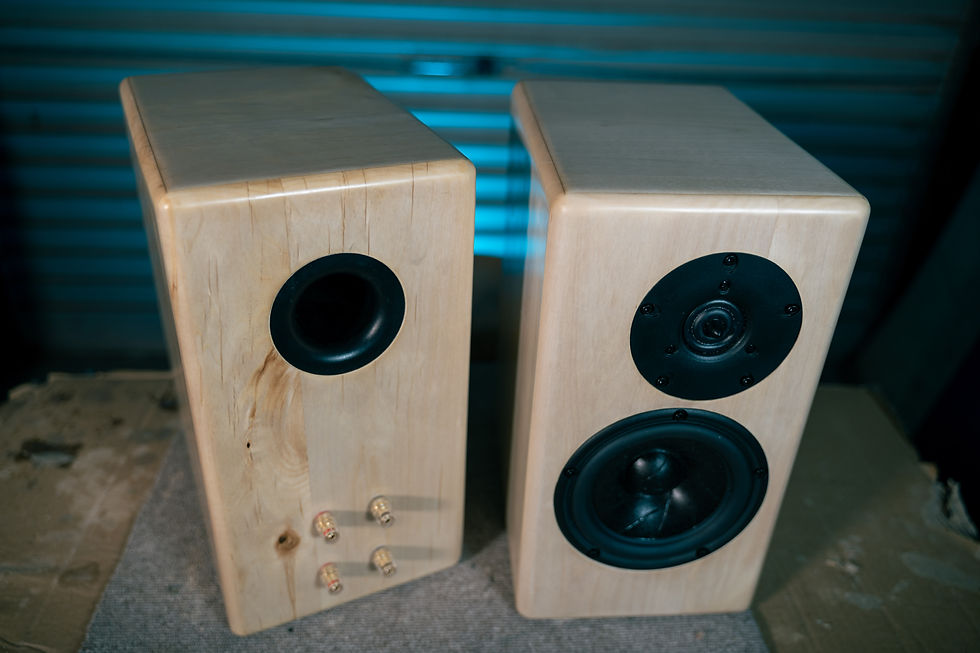From Diffraction to Perfection: The Impact of Cabinet Edges on Sound
- thespeakerprojecta
- Aug 12, 2023
- 2 min read
Updated: Dec 3, 2024

Why do some speakers have rounded edges while others have square ones? Is it merely aesthetics, or does it impact the sound? To answer this question, we need to revisit the phenomenon known as diffraction. To recap, acoustic diffraction refers to the bending and spreading of sound waves as they encounter the external edges of a speaker cabinet. When sound waves hit the edges, they bend and bounce in all directions. These newly rebounded sound waves then travel towards the listening position, causing both frequency response irregularities and phase cancellations. This phenomenon can significantly impact the speaker's overall sound quality and dispersion characteristics, making it essential for speaker designers to employ certain strategies to minimize these effects. Recalling our previous discussion about how the offset tweeter greatly reduces diffraction impacts, what if there's more we can do? We can round over the cabinet edges.

How on earth do rounded edges reduce diffraction? Well, it's all about creating a smoother path for sound waves to travel. When sound waves encounter sharp cabinet edges, like those in speakers without rounded corners, they bend abruptly around these obstacles, causing diffraction and interference patterns. By rounding over the edges of the loudspeaker cabinet, we create a gradual transition for sound waves to navigate. This smooth transition allows the sound waves to bend more smoothly around the edges, reducing the chances of reflection towards the listening position. In the Trohet course, we explore an easy method of rounding over the edges using an electric trim router and a 12.5mm round over bit. But does this impact the sound significantly? Is it imperative? To investigate, we refer back to the frequency response, displayed on the horizontal axis from 200 hertz to 20,000 hertz. Green line is Trohet with square edges, red line is Trohet with rounded edges.


Upon examining the graphs above, we observe that the rounded edges lead to a 1-decibel reduction in diffraction between 3 and 4 kHz. Is this a substantial improvement? Not quite. The primary credit for reducing diffraction goes to the offset tweeter arrangement, which plays a significant role. The rounded edges, in comparison, provide a finishing touch to the design. In summary, rounding over the edges offers a modest enhancement to the Trohet's performance. However, for speakers with tweeters centered on the front baffle, the impacts would be much more pronounced. So, my advice would be to opt for rounded edges on the Trohet's if you prefer the aesthetics. If square edges suit your taste, fret not, as the performance differences are minor and won't significantly affect your audio experience. The choice lies in the eye of the beholder, and both options promise to deliver audio bliss.
Additional reads:
True value of DIY audio - How big audio is ripping you off
Designing the Trohet R.- A high performance monitor

Comments